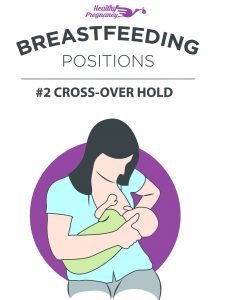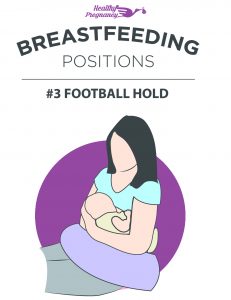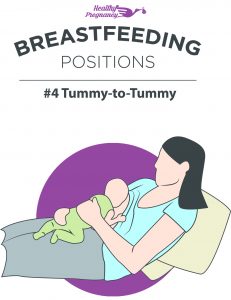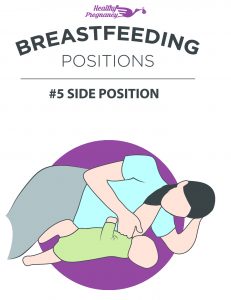
Breast milk is the healthiest option when feeding your baby. It provides essential nutrients that babies need for proper growth and development. While no one disputes the importance of breastfeeding, it can be a bit overwhelming for new mothers. You may worry that your body is not producing enough milk, or have concerns about the baby latching on. Fortunately, there are different methods available to help things go smoothly.
Feeding Positions

When it comes to breastfeeding, not all positions are equal, and as you become more comfortable with nursing your little one you’ll have your favorite positions for mood and comfort.
The Cradle Hold
This position is the most common breastfeeding position and is perfect for full-term babies. For this, you hold your baby as you normally would, supporting the neck and head inside your elbow. Then, use the opposite hand to guide and adjust the breast on the side the baby is resting on. For example, if your little one is nursing on the right breast, rest her head in the crook of your right arm.
If your baby seems to have difficulty latching on at this angle, switch it up and try the cross-over hold.

Cross-Over Hold
This position is very similar to the cradle hold, and is also known as the cross-cradle hold. What makes this position different from the cradle hold is that you won’t support your baby’s head with the crook of your arm. Instead, you’ll hold your baby’s head with your opposite hand.
For example, if you are nursing from your right breast, use your left hand and arm to hold your baby, with your left hand supporting their head. Rotate your baby’s body so their chest and tummy are directly facing you.

The Football Hold
Here is another position you can try that is similar to the cradle hold. This one is especially helpful after a cesarean because the baby cannot put additional pressure on the incision area. It is accomplished by holding the baby against the side of your body, using your hand and arm for support.
For this position, be sure you aren’t pushing your baby’s head too harshly toward your breast and prevent him or her from having to arch her head against your head to latch on.
Tummy-to-Tummy

If you would like to try something a little cozier, there is also the tummy-to-tummy feeding position. This leaves your arms available for hugs and cuddles, while they nurse. In this position, your baby can rest on you in any direction that’s comfortable, as long as their front of the body is against yours and he or she can easily reach your breast without arching.
Side Position
In the beginning, new moms worry that they won’t have the energy to breastfeed their baby.

If this is the case, you can try the side position. You simply lie on your side with the baby in your resting arm. In this position. The baby is close to your breast for feeding, but the bed holds the extra weight for you. You can also choose to prop yourself up with your arm on the bed or straighten it out for a more comfortable laying down position.
In this position, if you find that your baby needs to be a bit higher or closer to your breast, simply use a small pillow or a folded blanket under their head for extra height and support.
Change Techniques
Sometimes babies are reluctant to latch on, no matter which position you choose. If the problem persists, mommies should consider the technique they are using. One helpful tip is to try enticing your baby by rubbing the nipple across their lips. You can also try bringing your baby close to your body. While babies instinctively know what to do, they prefer to be lead, not forced, to eat. Maybe your baby is feeding, but it doesn’t seem to take as long as you expected. For this issue, you can try burping your baby more often. Unlike bottle-feedings, it can be difficult to measure exactly how much your baby is getting. So, it is easy to misinterpret trapped gas as hunger. Moms should also be sure that their baby’s mouth covers both the nipple and areola. Most people focus on the nipple, but both areas require the sucking stimulation in order to produce breast milk.
Utilize Resources
While women give birth every day, your experiences are unique to you. There is no shame in admitting that you need help. Most hospitals now have nurses and specialists who come to your hospital room after delivery to coach new mothers through their first nursing process. They provide you with a chart to document your baby’s feedings and bowel movements. Some of them even bring videos, so that you have a visual aid to use as an example. There are also parenting classes and support groups available. These meetings provide a non-judgmental environment where people can share their concerns without fear. You may not feel comfortable airing your problems to professionals, but you could see things differently when talking to someone who has experienced those same feelings.
Despite any anxiety you may feel, breastfeeding is completely natural. This means the body is prepared for and anticipates this action. If you have tried all the advice you were given and continue to have trouble with feedings, do not hesitate to inform your pediatrician. There may be an underlying medical reason for your baby’s difficulty. Overall, remember to stay calm and trust your instincts. Your new, little miracle is just the beginning of motherhood.


